 Using Google to direct traffic to your blog can quite literally translate into gold. Or at least money with which you could buy gold.
Using Google to direct traffic to your blog can quite literally translate into gold. Or at least money with which you could buy gold.
This article will show you how to easily optimize your blog for search engines.
Let's be clear on few points before we begin. When search engine optimization (SEO) is done the wrong way:
- It's a spammy attempt to manipulate the search-engine traffic.
- It's SEO experts selling a guaranteed top-10 placement.
When SEO is done the right way, it's NOT guaranteed and it's NOT immediate, but it is ongoing.
Now let's cover the basics.
What's your blog about? The topic you cover will, to a large degree, dictate your placement. If you said “real estate” or “automobile” or “website hosting” or “SEO,” you will have a LOT of competition. You could help things a bit by focusing on YOUR geographical area (as in “real estate in Pasadena, CA,” for example).
But remember, some topics are extremely competitive and therefore more difficult to crack, making it on the first, second or third page of the relevant search. This part is paramount because most Google sleuths don't make it past the second page.
On the other hand, if your topic is obscure and very specific, PLUS the space is not densely populated with competition, you can conceivably end up as a top search result for that topic. This is assuming that you've implemented sound SEO practices. And that's what this article is about.
Who are you targeting? Who is your audience?
Having a crystal-clear understanding of who your audience is and what THEY'RE searching for helps you narrow your focus and increase your chances of having an effective SEO campaign.
If all this sounds too complicated, you could just pay someone to do it. If you do decide to outsource SEO, you should set aside a minimum of $3,000 to $5,000 monthly for a dedicated SEO professional.
Now that you know the cost, are you a little more motivated to learn how to do it yourself? I would encourage you to ask around and get some quotes. Here is what you would be paying for:
A good SEO person will have varying degrees of proficiency in:
- CSS
- Data analysis
- Blogging
- HTML
- Copywriting
- Link-building
- Search engine algorithms
Those are the skill sets off the top of my head.
As I see it, you have three options:
Get World-Class Marketing Training — All Year Long!
Are you facing doubt, uncertainty, or overwhelm? The Social Media Marketing Society can help.
Each month, you’ll receive training from trusted marketing experts, covering everything from AI to organic social marketing. When you join, you’ll also get immediate access to:
- A library of 100+ marketing trainings
- A community of like-minded marketers
- Monthly online community meetups
- Relevant news and trends updates
1. Hire a dedicated SEO person/team.
2. Hire a part-time SEO expert who can dedicate a portion of his or her time to your page rank. This might be all that's needed for most small- to medium-sized businesses. (Note: Page rank is a non-geeky way of saying “Google search-engine algorithm.”)
3. Learn the basics yourself. The basics will get you pretty far.
In this article I'll focus on the last one—learn the basics yourself. So how do you do this? Well, you've come to the right place. An important part of any SEO strategy will be keyword discovery and implementation. This article will focus on those two factors.
Harvesting and Piggybacking
I recommend a three-step process in your keyword discovery process.
#1: Get into their heads.
A great place to start understanding what keywords are desirable is to find out what keywords are used by your comps (comps is a real estate term for comparable properties).
We do this by first inspecting what keywords are used on your comp's web page.
In your browser, usually under “view,” you can “view source” of the webpage. Here's how:
https://www.youtube.com/watch?v=erjqTugMviI
Takeaway lessons from the video:
- There will be a LOT of gibberish in there. But all we're looking for are “meta tagged keywords.”
- Manual research allows you to get into your comps' heads.
- View several pages to get a good sense of what your comps are trying to rank for.
- Repeat the process for another 3-4 comps.
#2: Piggybacking: Leverage Automation and Your Comps' Research.
Go to https://adwords.google.com/select/KeywordToolExternal and type in a word or phrase that is relevant to your business.
https://www.youtube.com/watch?v=VG-42LmFKNE
Takeaway lessons from the video:
- Google Keyword Tool will return related phrases, often many that you didn't even think of.
- You can export these results, view monthly search numbers and sort phrases by popularity.
After you've performed this on your top five comps, collected the data and exported your finding into a CSV file, you'll have a pretty good idea of:
- What people are searching for (it's almost never what you think it is)
- What your comps are indexed for
- Where you fit in
Now that you've harvested keyword information and effectively piggybacked on your comps' research, you should narrow your list down to a manageable number (100 or so keywords).
The keywords that YOU are going to use should reside at the intersection of:
- Most relevant to you/your post/blog/website
- Most highly searched for
- Least used by your comps
Note: While recommendation #2 is a good guideline, do keep in mind that less often searched-for phrases tend to have higher conversion rates.
#3: Implement: Apply What You Learned.
It's time to install and learn how to use a nifty little WordPress plugin called All in One SEO to quickly, easily and effectively utilize the information gathered during the harvesting and piggybacking research phase. If you're not running a self-hosted WordPress website, this is not for you.
Download and install All in One SEO plugin. Click on the video for a little bit of show-and-tell.
https://www.youtube.com/watch?v=f5RhfJJWHK8
Takeaway lessons from the video:
- WordPress makes it very easy to add plugins; however, you shouldn't install any plugins that haven't been tested. Here are instructions on how to set up a WordPress sandbox on your laptop.
- Some plugins (like All in One SEO) are must-haves. Others should be installed only if absolutely necessary.
- All in One SEO will have to be configured globally, on per-post and per-page basis.
All in One SEO Pack Configuration—Global Settings
Plugin status:
You can enable it or disable it.
Home Title:
If left blank it will default to whatever you configured under Settings/General/Site Title in WordPress. However, don't leave it blank.
Note: According to SEOMoz.org's SEO ranking factors survey, page titles are one of the most important factors.
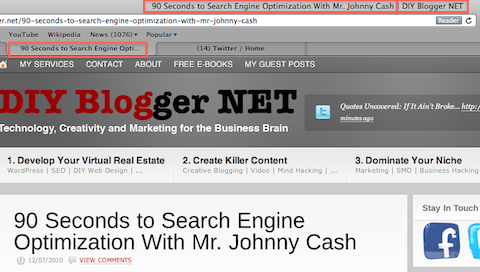
Home Description:

Discover Proven Marketing Strategies and Tips
Want to go even deeper with your marketing? Check out the Social Media Marketing Podcast! Publishing weekly since 2012, the Social Media Marketing Podcast helps you navigate the constantly changing marketing jungle, with expert interviews from marketing pros.
But don’t let the name fool you. This show is about a lot more than just social media marketing. With over 600 episodes and millions of downloads each year, this show has been a trusted source for marketers for well over a decade.
While description ranks lower on the page rank scale, it's paramount to have it filled out appropriately. Search engines will display the description immediately underneath your web page. There it's best to have a human-friendly call-to-action type of message.
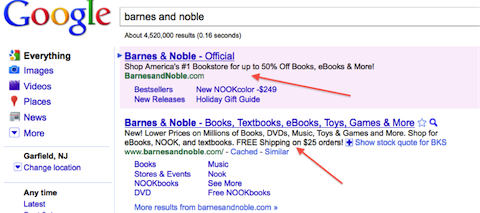
Home Keywords (comma separated):
What are the main topics covered on your site? That's what should be entered here in the order of relevance. For example “blogging, marketing, WordPress, writing,” and so on…
Note: Home keywords were abused in the early days of SEO (stuffed with popular but irrelevant search words), which resulted in search engines deprecating their importance.
Don't overstuff. Spend a few minutes configuring and it might help. It certainly can't hurt.
Canonical URLs:
Enabled by default and should be left as such. This helps with duplicate content, which is a HUGE no-no. If you're not familiar with canonical URLs, and would like to be, read this Google webmaster blog post.
Rewrite Titles:
This controls the title-related settings underneath. We're not going to cover them individually. “Title” is what you see in your browser's window title bar. If set, all page, post, category, search and archive page titles get rewritten.
Why would you want to do this?
The default title generation setting for WordPress is extremely anti-SEO. Depending on your version of WordPress, the default structure will most likely look like this:
Category >> Blog Name >> Post Title
This is suboptimal.
You should allow the SEO plugin to rewrite it to something more SEO-friendly, for example:
Post Title >> Blog Name
Note: This is all about specificity. The post title is likely to have specific keywords related to the post itself. Therefore it should be the first thing a search engine “sees.”
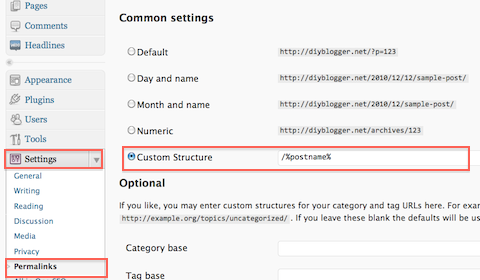
Description Format:
Four available options, leave the default as is. It will grab the description from whatever is set at the post level.
404 Title Format:
The box sets the page title for your “page not found” error page. The default is “Nothing found for %request_words%”. Leave as is.
Paged Format:
This string gets appended/prepended to titles when they are for paged index pages (like home or archive pages). Leave it alone.
SEO for Custom Post Types:
WordPress version 3.0 introduced the ability to create your own custom post types in addition to the default two (post and page).
I really haven't used this, so I can't offer much in terms of practical advice. If you would like to learn more about it, visit WordPress.org Custom Post Types pages.
Custom Post Types for SEO Column Support:
Related to above, disabled by default. Leave it alone.
Use Categories for Meta Keywords:
This is for those bloggers who are hyper-strategic about their category names. If you're like most of us, you'll leave this one alone and add your keywords manually for each post.
Use Tags for Meta Keywords:
Checked by default, it causes the tags you set for a given post to be used as the meta keywords for that post. What this basically means is that your tags and your keywords don't have to be entered in both places. In fact, if you enter the same word in both the Tag and the Keyword field, you might get dinged by Google.
Dynamically Generate Keywords for Posts Page:
Related to the third type of post we mentioned above. Irrelevant unless you're using custom posts. Leave it alone.
Use No Index for Categories and (Tag) Archives:
This is kind of a non-issue especially if “Canonical URL” is configured. It tells Google NOT to crawl duplicate content.
Autogenerate Descriptions:
This is very cool if you can squeeze all your relevant keywords within the first 150 characters of the article.
Capitalize Category Titles:
Other than visual appeal I know of no special benefit of doing this. Google doesn't care if your titles are uppercase or lowercase but it looks pretty.
Exclude Pages:
Enter any comma-separated pages here to be excluded by All in One SEO Pack.
This is helpful when using plugins that generate their own non-WordPress dynamic pages. Forums are a good example. You may decide to manage the way your forum gets “indexed” using forum-specific tools.
Additional (Post, Page, Home) Headers:
These are not required for basic SEO practices. They're used with various webmaster tools but otherwise uninteresting.
Log Important Events:
This is for developers only. Once the global settings are all done, every time you write a new post, you'll have to configure All in One SEO tool on per-post basis. No worries though, this one is quick and painless.
All in One SEO Pack Configuration—Post Settings
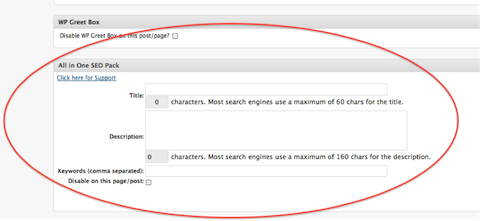
Title:
By default, the title will be generated based on your setting under Settings >> Permalinks. You should configure /%postname% under “Custom Structure,” which will generate the appropriate post title automatically.
If, however, you decide to enter a custom title here, it will take precedence over any other. Why would you want to do this? Post title ranks high on Google's “importance” scale and stuffing your title with keywords might better your chances.
Description (Meta):
You have 160 characters to describe your post for search engine meta analysis. Use them wisely. Remember our Barnes & Noble example? This should be a human-friendly call to action. Include most relevant words first.
Keywords (Meta):
Put your most important keywords (search phrases) up front. Your hard work during keyword harvesting phase pays off right here.
Note:
Your keywords should be relevantly spread across the main body of the article, tags, meta description, keywords, etc.
Enable/disable on per-post basis:
Self-explanatory I hope. Use it in case you want to hide from Google.
All in One SEO Pack Configuration—Page Settings
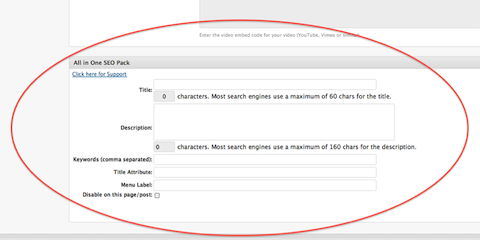
Title, Description and Keywords and Enable/Disable are the same as before.
The new settings are:
Title Attribute:
Has no or minimal effect on ranking. It's basically a tool tip when you hover over a link.
Menu Label:
This in effect renames your page without renaming the URL.
Keyword research and configuration are some of the most important aspects of a well-run SEO campaign. In fact, they're among the top most important things you can do.
If you had to choose your top three most important SEO strategies, what would they be? Leave your comments in the box below.
Attention Agency Owners, Brand Marketers, and Consultants

Introducing the Marketing Agency Show–our newest podcast designed to explore the struggles of agency marketers.
Join show host and agency owner, Brooke Sellas, as she interviews agency marketers and digs deep into their biggest challenges. Explore topics like navigating rough economic times, leveraging AI, service diversification, client acquisition, and much more.
Just pull up your favorite podcast app, search for Marketing Agency Show and start listening. Or click the button below for more information.

